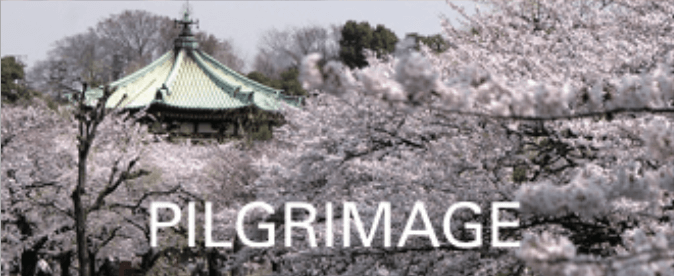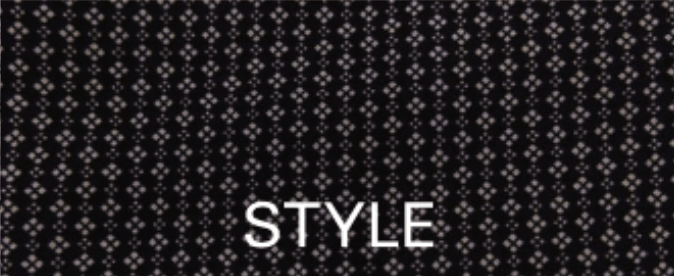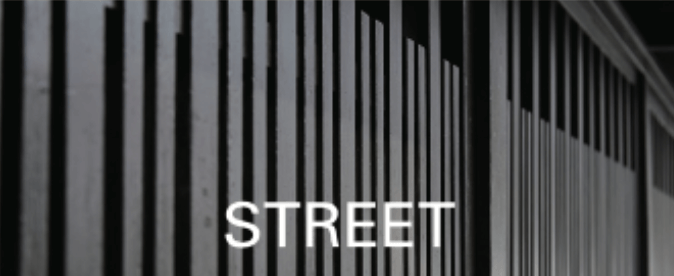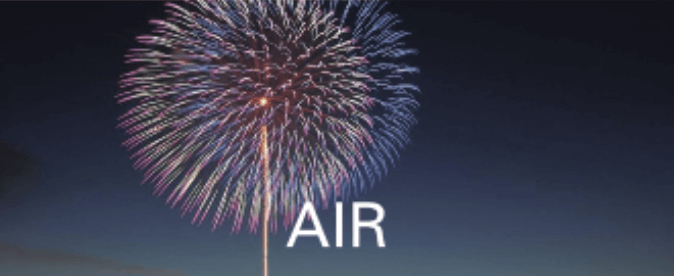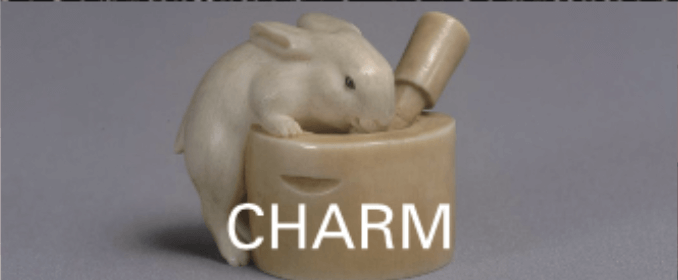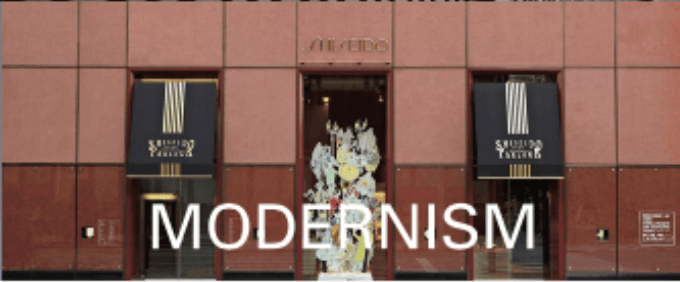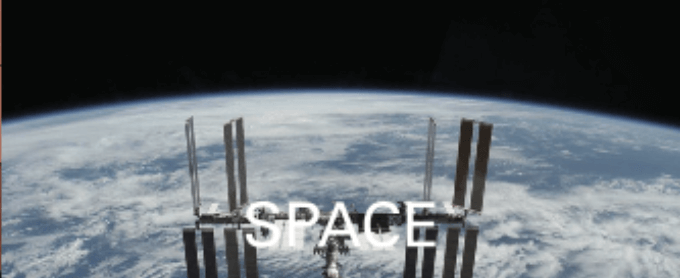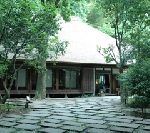
Shirasu Jiro (1902 – 1985), a Japanese businessman, was deeply involved in the establishment of the new constitution after World War II. He was also the chairman of Tohoku Electric Power Co., Inc. Shirasu Masako (1910 – 1998) was an art critic and essayist, who was the wife of Shirasu Jiro. Buaiso is the former residence of Shirasu Jiro and Masako. The Shirasu couple thought that the War would have expanded, and bought an old farmhouse in 1940. They renovated it and moved to it in 1943.
The Buaiso introduces furniture such as a knee rest made from excess fabric, which reflected Jiro and Masako’s PRINCIPLES of style.
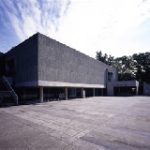
This museum was established in 1959 when the collection of Matsukata Kojiro (1866 – 1950), a Japanese businessman and Western art collector, was returned to Japan. The Matsukata collection had become the property of France in World War II, but was donated back.
This building was designed by the master of modern architecture, Le Corbusier (1887 – 1965), a Swiss-French architect. His proposal was for an infinitely growing museum. Corbusier’s architecture emphasizes floors, columns, and stairs. It considers the reasonableness in breaking from tradition.
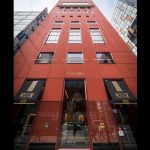
In the Edo period (1603 – 1868), the Three Noh Theaters were located near Ginza 7-chome, and the craftsmen of spears and pans lived in Ginza. The construction of Brick buildings on the streets in Ginza began after the Ginza Great Fire in 1872.
The new Ginza attracted retailers of decorations, imported goods, food and drink, and Western-style pharmacies. The common theme of those stores is “Modern and Genuine”. The dispensing pharmacy eventually became the face of Ginza, and evolved into the Tokyo Ginza Shiseido Building.
This gallery inherits that spirit.
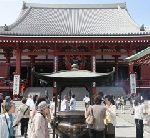
This temple was founded in 628 and, at that time, enshrined the golden statue of Sacred Kannon, the Buddhist Goddess of Mercy. Omaedachi statue, the statue exhibited in place of the hidden one, was made by Jigaku Daishi Ennin (794 – 864), the 3rd head of the Buddhist Tendai sect, from Enryakuji Temple Shiga. Ennin made this after visiting this temple in the beginning of Heian period (794 – 1185).
This temple became Kigansho, a temple for the Tokugawa clan, in 1590, when Tokugawa Ieyasu (1543 – 1616), the founder of the Tokugawa Shogunate, moved to Edo from Suruga, Shizuoka.
The garden of Denboin Temple is open to the public for a limited period. It is a Japanese style garden with a path around a central pond, which is said to have been landscaped by Kobori Enshu (1579 – 1647), a feudal lord, a master of the tea ceremony, an architect and garden designer. The rock arrangement in Japanese landscape gardening, create Kirei sabi, rich beauty and refined simplicity.
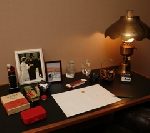
Endo Shuusaku (1923 – 1996), a Japanese author, lived in Machida, in seeking a green environment for medical treatment. This museum of literature stores materials of Endo, Morimura Seiichi (1933 – ), Yagi Yoshinori (1911 – 1999), and others writers living in Machida City. It is an 8-minute walk from Machida Station, is a building built of brick, located on the outskirts of the downtown area. It is a space where book lovers can feel free to stop over and talk about their impressions of the exhibits and works.
– Endo wrote as a Japanese Roman Catholic. Silence – Rodrigo, an Italian Jesuit priest arrived at the Goto Islands in Japan in 17th century to find the priest renounced his faith, under the decree of prohibition on Christianity. He was betrayed by Kichijiro who was an alcoholic fisherman, renouncing his Catholic faith, and was imprisoned with many Japanese converts. Eventually Rodrigo heard the voice after a long silence. And he recognized that “Who can say that the weaker did not suffer more than the stronger?”
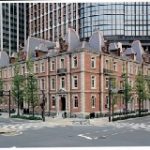
The building of this museum was designed by British architect Josiah Conder (1852 – 1920), who was hired by the Meiji Japanese government as a professor of architecture for the Imperial College of Engineering. The building was completed in 1894, as the Mitsubishi No.1 building. The present Mitsubishi No.1 building was restored to its original appearance as faithfully as possible, and this museum opened in 2010, which holds special exhibitions centered on 19th century modern art, the same period as this building.
Mitsubishi Ichigokan Museum, is located in the Marunouchi business district. Marunouchi was used for the barracks and parade ground for the Japanese Army, in the front of the Imperial Palace, after the Meiji Restoration. The Meiji Restoration was an event that sectored practical imperial rule of the Empire of Japan in 1868 under Emperor Meiji. After the barracks and the parade ground moved, Marunouchi transformed to a business district, constructing the building of the Mitsubishi Ichigokan.
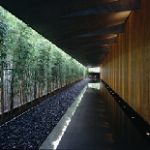
The garden site of this museum was selected by the Nezu Kaichiro Sr. (1860 – 1940), a Japanese railroad king and politician, as his residence. He was an ardent tea practitioner, had tea name “Seizan”, and enjoyed building this 17, 000 ㎡ garden. It has a quiet and deep ambience, unlikely to be in the center of Tokyo.
Stone structures are placed along the strolling street, with the building in the style of a tea-ceremony arbor. This garden has the subtle and detailed structure which reminds us of the memory of the old “Visiting Gods”.
This museum was opened in 2005 at the Mitsui Main Building (important cultural property), which was built in 1929 with Western-style architecture. This museum conveys the elegance of tradition in Japan and Asia art. There is Yukimatsu-zu byobu – the Folding Screen of Pine Trees in the Snow by Maruyama Okyo (1733 – 1795), the founder of the Maruyama school of painting. The pine trees reflect the glittering light and stand upright in the snow-covered canvas.
It was drawn with rich emotion, using only ink, Kindei, a gold mud, and the white color of the paper. The pine trees were drawn with Mokkotsu, an oriental painting technique without outlines. Sessho-zu byobu is a masterpiece of Okyo, who fused the traditional decorative painting style and the flat and clear expression of sketching.

Sensouji temple was founded in 628 and is the oldest temple in Tokyo. Tokugawa shogun rebuilt as tutelary temple of the shogun family, during the Edo era (1603-1868). As a result, worshipers to Sensouji temple increased. Nakamise is the Omotesando, official path to the temple. It is one of the oldest shopping streets in Japan, where vermillion colored shops line up on both sides of the path, for about 250 meters in length. Nakamise path is always very lively, where people support one another, regardless of who you are nor where you come from.
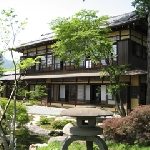
This museum is the former family residence of Nezu Kaichiro Sr. (1860 – 1940), a Japanese railroad king and politician. It has the theme of learning and inheriting the idea of beauty to have the awe-inspiring to the nature, and introduces the life of Kaichiro through the materials and the garden.
This museum faces the Ome-kaido Road, and remains Nagaya-mon, a gate and house of security. The 28.8m wide and 5.4m deep building is a Nationally designated tangible cultural property. Seizan-so, which used to be the reception hall, was named for Kaichiro’s tea name “Seizan”, who was an ardent tea practitioner. Seizan-so has a tea room, named Kakitsubata, a rabbit-ear iris. This name came from Kakitsubata-zu, the painting of rabbit-ear iris, a six-panel folding screen, by Ogata Korin (1658 – 1743), a Japanese painter, lacquerer and designer of the Rinpa school. – Kakitsubata-zu, the six-panel fold screen is possessed by the NEZU MUSEUM in Tokyo.
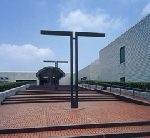
This garden is designed with the image of the mountains and fields you can see from the garden of a samurai residence in the Edo period (1603 – 1868). Kabukimon, a gate with a crossbar, is in the site of the Sakurajo Castle, located in the southeastern part of the museum.
The botany in the garden are planted in specific groups, based on their purpose in life. Food includes loquat and udo (ginseng). Paper-related plants include Japanese linden and wisteria. For dyes, there is cape jasmine, mulberry, and safflower. Medicinal plants include nandin, ginkgo, and houttuynia cordata, Tool-related plants are oak, zelkova, and Egyptian cucumber. Painting, glueing, and fuel feature pine tree, lacquer tree and wild sesame.
Japanese culture coexists with beauty and nature.

This museum is a research institute established in 1981 for the purpose of promoting the research of history, archeology, and folklore. It promotes educational activities by exhibiting materials about Japanese culture coexisting with beauty and nature. –
Asagao-so, the morning glory picture book that was first published in Edo in 1817, is a manual of how to plant the morning glory and how planting it became popular. There are also 100 beautifully colored drawings of the morning glory.
It was a popular competition in Osaka, Kyoto and Edo to cultivate new morning glories, created by mutations, during the Bunka and Bunsei era (1804 – 1830) in the Edo period.
And it spread to the surrounding cities and towns, during the Kaei and Ansei era (1848 – 1860) in the Edo period. In the latter part of the 19th century, there was a boom in creating unique morning glories among samurai, wealthy townspeople, and monks in the cities.
It lead to the boom in enjoying the unique flowers and leaves of the changing morning glories during the Meiji period (1868 – 1912) and the Taisho period (1912 – 1926).

Mr.Keisuke Serizawa, who encountered Okinawa’s Bingata polychromatic design method of dyeing, created works with the ancient “stencil dyeing” technique. He fascinated the world.
His various patterns included letters, plants, geometric patterns and others. He dyed kimonos, bands, cover designs of books and signboards. He also designed the Ohara Museum of Art craftworks gallery.
This museum introduces the Serizawa world, where the ancient and contemporary live comfortably together.
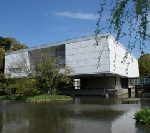
This museum will hold seasonal exhibitions that introduce the charm of Kamakura and special exhibitions that probe one theme, aiming to become a new cultural center for Kamakura, in centering on the history of Tsurugaoka Hachimangu.
This museum located at the grounds of Tsurugaoka Hachimangu is the successor to the former Museum of Modern Art, Kamakura Annex, which is the first public museum of modern art in Japan, and was designed by Sakakura Junzo (1901 – 1969), a Japanese architect in 1951.
Sakakura studied in France under the master Le Corbuisier (1887 – 1965) a Swiss-French architect and one of the pioneers of modern architecture. He designed the Japan Pavilion on the slopes of Trocadero at the 1937 Paris Exposition. He received the Grand Prix of the Exposition in Architecture. He was the first Japanese architect to be recognized internationally.
From March 1, 2022 to January 9, 2023, the 13 Lords of the Kamakura, TV series Theme exhibition is being held.
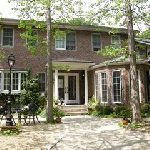
This museum is like a picture book, located in Kita-Kamakura, along with Meigetsu-in Temple (Zen temple) and Enkakuji Temple (Zen temple). It is a brick-built Western-style building and exhibits original paintings, such as watercolor paintings, oil paintings and drawings by Yoh Shoumei (1946 -), a picture book writer, poet and an award-winning author of the International Children’s Book Exhibition in Bologna, Italy.
Yoh was born in Kumamoto prefecture. He studied oil painting in New York and published a picture book. He is a painter who has always seen his daily life as poetry and knows how fragile it is.
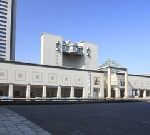
This museum possesses a broad collection, such as the works of Salvador Dalí (1904 – 1989), a Spanish surrealist painter, Renè Magritte (1898 – 1967), a Belgian surrealist painter, and Paul Cèzanne (1839 – 1906), a French Post-Impressionist painter. The museum also featured works of artists deeply associated with Yokohama since the End of the Edo period (1603 – 1868) and the Meiji period (1868 – 1912), including photo collections. This museum holds attractive temporary exhibitions throughout the year, in addition to the collection exhibition that introduces these works.
Photography arrived in Japan in 1860, in the year after the port of Yokohama opened to overseas visitors. An American opened the first photo studio in Japan in Yokohama. The history of the opening of the Yokohama Port is also the history of Japanese photography. (The museum will be closed from March 2021 to 2023 for renovation.)
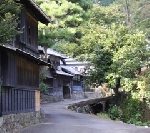
Nihonzaka Pass was on the Tokaido Road, the route connecting Kinki and Kanto in ancient times. It is said that Yamatotakeru no mikoto, a Japanese legendary prince of the Yamato Dynasty, and the son of Emperor Keiko, passed through here in his expedition to the east.
Hanazawa no Sato, Village, is a mountain village and located on the Tokaido Road, which was described at Manyoshu, the 8th century anthology of Japanese poetry. This Village has a row of houses with wooden walls on the stone walls, and the landscape remains with a great atmosphere.
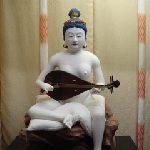
This shrine used to be a temple that was originally counted as one of the three biggest Sarasvati temples in Japan. Sarasvati is god of wealth, music eloquence and water.
In the Asuka period (592 – 710), this shrine was built by the imperial command of Emperor Kinmei. In the Kamakura period (1185 – 1333), Shogun Minamoto no Yoritomo (1147 – 1199), and his wife’s family, the Hojou family, believed deeply in this shrine.
In 1872, as a result of the new government policy that separated Buddhism and Shintoism, this temple was renamed as a shrine and abolished the Buddhist ceremony. At that time, many Buddhist facilities and Buddha statues were discarded.
The pilgrimage to this shrine, during the Edo period (1603 – 1868), was painted by Utagawa Hiroshige (1797 – 1858): artist of Japanese ukiyo-e, painting to draw the city pleasure and travel by woodblock prints and painting, and many Ukiyo-e painters.

One of the attractions of this museum facing the forest and the sea, is a building integrated with the landscape. The main building, covered with double skin (double membrane) made of glass and iron plate, allows soft natural light to fall from the ceiling. You.can appreciate its works in an open space.
The museum has exhibitions four times a year, displaying modern works from the Meiji period (1868 – 1912), the Taisho period (1912 – 1926), and the Showa period (1926 – 1989), as well as works by artists who are currently active.
At the annex, the Taniuchi Rokuro Pavilion, you can enjoy the work of Taniuchi Rokuro (1921 – 1981), who had drawn Cover Pictures of weekly magazines.
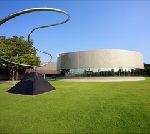
It is on the vast grounds of the Shiseido Kakegawa Plant, which is surrounded by the mountains linked to Mt. Awagatake, with a gentle breeze blowing from the Enshu-nada Sea. Shiseido Art house exhibits superior modern art works.
At the corporate museum, Shiseido’s intellectual assets, product packaging, spanning over 140 years since its founding, are chronologically exhibited. Each item is true luxury, individually made, with great time and effort. There is nothing like timeless beauty!
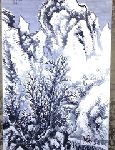
This museum preserves and exhibits the works and favorite items of Tazaki Soun (1815 – 1898), a painter of the literary school, who was active from the end of the Edo period (1603 – 1868) to the Meiji period (1868 – 1912). Hakuseki Sanbo of Soun’s residence, which is a thatched house with 2 stories, with a tea-ceremony room and an atelier, is reserved at the garden of this Museum.
Soun had drawn snow scenes throughout his life. He drew precisely the quantity, the shadow, and the movement of snow in all his works. Kenka Soun, which was his Nickname, kept mental independence in his professional life.

This Museum is adjacent to the Ikaho Green Ranch along the Altenade – the road of art that runs from Shibukawa City downtown to Ikaho Onsen, hot spring. This museum possesses about 1,000 items including abstract expressionism and pop art by the masters from the latter half of the 20th century and artists active in the 21st century art scene.The collections are painting, sculpture, photography, video, and installation etc.
This museum also has the collection of Hara Rokuro (1842 – 1933), a businessman who contributed to the industrialization of Japan. He was active during the Meiji Restoration, the event that sectored practical imperial rule of the Empire of Japan in 1868 under Emperor Meiji. The collection of oriental antique art knows the true value. In the industrialization of the 19th century, the mission of art was to preserve the inspiration for something innocent that occurred.
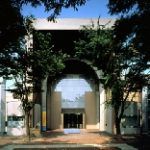
Okakura Kakuzo Tenshin (1862 – 1913), a Japanese scholar, contributed to the development of the Arts in Japan and was the author of The Book of Tea, left the Tokyo School of Fine Art in 1898. He worked with Yokoyama Taikan (1868 – 1958) and others to create “live art” rooted in Japanese history and culture, centered on Rokkakudo in Izura coast, Ibaraki.
This museum is the annex of the Museum of Modern Art, IBARAKI (Mito), which has the theme of Ibaraki art born from the region, in response to Bunten exhibition, art exhibition sponsored by the Ministry of Education (antecedent of the Nitten exhibition). This museum holds exhibitions of the museum collection and rents exhibition room.
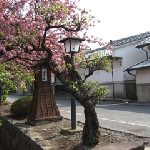
Shibukawa City is surrounded by active volcanoes of Mt. Akagisan and Mt. Harunasan, and dormant volcanoes of Mt. Komochisan and Mt. Onokoyama. A fount of innocence comes from the multi-layered mountains.
Shirai post town remains in the area where the Tone River and the Azuma River meet, which has a row of Dozo Zukuri, earthen-walled storehouses and waterways that took over the castle town in the Medieval Ages.
The townscape takes in the natural rhythm of a fount of innocence to inspire visitors and maintains the atmosphere of the past.

Yamada Tokuzo (1885 – 1964) was a dealer of Kimono, Japanese traditional clothes. He aimed to build the Kannon: the Buddhist Goddess of Mercy, Sacred Sites Pilgrimage, by himself, for 50 years. He dug a tunnel, built a statue of Kannon, a stone Buddha, and built a garden, named the best garden in the northern Kanto region.
In the cave, 39 statues of Kannon, made of Mikage Ishi (granite) are set, tracing the Pure Land, the deep mountain valley, cataract and mountain stream. The mysterious space is shaped like a forest of faith.
This museum exhibits the original drawings of Kitazawa Rakuten (1876 – 1955), who was the first professional cartoonist in Japan.
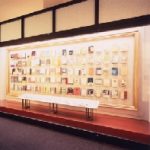
This museum opened in 1999 on the rich, natural shores of Yamanaka Lake. This museum has the collection of handwritten manuscripts, creation-research notes, letters, paintings, photographic materials, books, research, translations, magazines, movies, drama materials, etc. From these collections, it was discovered that Mishima had many teenage writing works. At this museum, you can learn about the dramatic life of Mishima and the source of the wonderfulness of Mishima Literature.
– Mishima wrote novels with the theme of beauty, the sea, and death. He also described the fear of the sea as a change in admiration, and he portrayed a gorgeous emptiness in Japan after World War II.
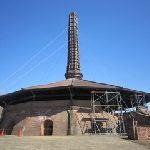
It is a brick kiln founded at Nogi Town in 1890 by the former Shimotsuke Brick Manufacturing Company, which has a hexdecagonal outline, is about 34m high and a 100m circumference. It is valuable industrial heritage, maintaining its complete shape, and is National important cultural property. This kiln was a state-of-the-art continuously firing kiln, devised for brick production by Friedrich Hoffmann of Germany.
It had sustained the modernization (brick construction) for about 80 years from 1890 to 1971, which the government and public offices began as Civilization and Enlightenment, after the Meiji Restoration, an event that sectored practical imperial rule of the Empire of Japan in 1868 under Emperor Meiji.
– In 1872, the Ginza Great Fire occurred in Tokyo, after the Meiji Restoration. The construction of Brick buildings on the streets in Ginza began. It showed that Edo ended and Tokyo started.
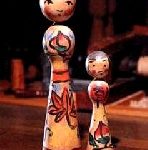
This center in Kuroishi City in Aomori Prefecture exhibits 11 types of Kokeshi dolls, which have a spherical head, a cylindrical body, and no limbs attached. Tsugaru Kokeshi dolls are made by a “Tsukuritsuke” technique that uses a single tree and are painted with a simple Rokuro, a turning lathe pattern, with the pattern of Nebuta, the summer festival of massive floating lanterns, and the peony flower of the Tsugaru Domain’s crest on the body.
The largest jumbo Kokeshi doll in Japan with a height of 4m21cm and the cute, unique Kokeshi doll, painted by Munakata Shiko (1903 – 1975), a Japanese woodblock print artist, are also exhibited.
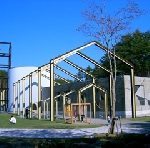
Ennen no mai, longevity dances, are dedicated after a Buddhist service, which has been handed down at this temple since ancient times and conveys the history of the fusion of the culture of court nobles in Kyoto and the culture of local folk. Ennen no mai is designated as an important intangible folk cultural property and is still dedicated to events such as January 20, May 5, and November 3.
The scenery of the Jodo Garden – Pure Land garden of the temple, changes every season with tender green, cherry blossoms, irises, habi-bush, autumn colors, and snow, where the wind from Pure Land blows.

This museum of literature is attached to the prefectural library. It permanently exhibits Dazai Osamu (1909 – 1948), and 13 other writers who represent Aomori Prefecture. Kitabatake Yo (1903 – 1982) was a folklorist and poet, who wrote children’s stories. Her grandparent’s residence (3,966m2, on about 4ha) was in Furudate, a section of the village, Tukurimichi Village (Present: Aomori City Furudate). She used to go out on weekends, looking at the Hakkoda Mountains to the south and Mt. Iwakisan to the west.
She became a natural child and listened to grandmother’s old tales. That is the origin of her children’s story “Mimi no Soko no Sakana – My favorite fish in ears”: Myayoko is 6 years old. After her grandmother died, Mayoko was reminded of her voice and story and started to hear her grandmother speaking. Mayoko thought she became an invisible fish, who lived in her ears and gave power to Mayoko, somethimes,,,

Namahage folkloric demons of the Oga Peninshula in Akita Prefecture is the messenger of the gods in the Oga mountains. It is the traditional ritual on New Year’s Eve, that Namahage makes the rounds to houses in their village to give an admonition to wrongs, exorcisms, harvests, a big haul, and felicity as a visiting god. In Namahage Museum, there are 150 kinds of various Namahage masks, which were used in various parts of Oga city. They are the Power of masterpiece.
This museum also introduces the climate of the Oga and displays a traditional boat carved out of a whole tree, as well as local tools and other items. You can try on the real costumes of Namahage, too.

This Memorial Literature Center is surrounded by majestic nature, which nurtured the childhood of Kusano Shinei (1903 – 1988), a Japanese Poet. It introduces Shinpei’s life and works in the permanent exhibition room where a Japanese gastropub, Hinokuruma, the Fire Car, managed by him, was restored and where you can listen to him read his poetry. It holds a special exhibition to introduce literary people related to Shinpei and Iwaki City locals. At the Literature Plaza, visitors can write poems and the poems are stored in this center.
– Shinpei wrote poems with the theme of “Frog”, “Mt. Fuji”, “Heaven”, “Stone”, etc. He had a sense of co-existing with all things. While engaged in creative activities, he took various occupations. One was to manage a Japanese gastropub, ” Hinokuruma – the Fire Car”.
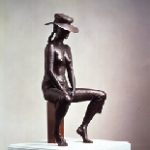
Sato Tadayoshi (1912 – 2011) was a leading Japanese sculptor from Miyagi prefecture and was a survivor of Detention in Siberia after World War II. Sato expressed lively female figures, with Bronze. He inherited the eye to capture the moment, in the tradition of Sendai.
This museum located along the Hirose River, introduces Modern Western painting, as well as when modern days arrived in Sendai. This museum possesses paintings, prints, sculptures and crafts from the Meiji period (1868 – 1912), which are closely related to the Miyagi and Tohoku regions.
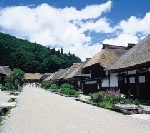
Ouchi post town is an important position on the old Aizunishi Kaido Road, which connected Nikko Imaichi Tochigi and Aizuwakamatsu Fukushima during the Edo period (1603 – 1868). The private houses are hip-roofed, with gable roof entrances to the road. Waterways are along the houses. The atmosphere of the Edo period is preserved and it gives us peace of mind.
At the end of Heian period (794 – 1185), Prince Mochihito (1150 – 1180), who was known as the Takakura Prince and the third prince of Emperor Go-Shirakawa (1127 – 1192), raised armies for the Minamoto clan, to overthrow the Heike (Taira) clan. The prince was defeated and killed by Heike soldiers, who discovered in advance that the prince was raising armies. It was also handed down orally here that he escaped from the predicament, and reached Ouchi post town.
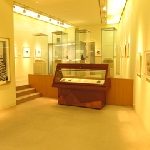
Takamura Chieko (1886 – 1938), was a Japanese artist in painting and colorful papercuts, and the wife of Takamura Kotaro (1883 – 1956), a Japanese poet and sculptor. Kotaro wrote “Chiekosho” – Chieko’s Sky, a book of poems by Kotaro. The true sky of Chieko that Kotaro described is the view of Mt. Adatarayama, seen from the Chiekonomori Park. Chieko was born in a sake brewery in Nihonmatsu City and studied Western painting in Tokyo.
While she was hospitalized in her later years, she produced over one thousand beautiful paper painting works, by Chiyogami, paper with colored figures, which Kotaro brought to her. Chiyogami, was the sky for her, which was a canvas. Chiyogami, can be overlapped with subtle colors in harmony and contrast. You can enjoy the charm of overlapping colors like Junihitoe, a ceremonial robe of a Japanese court lady.

Baron Kawada Ryokichi (1856 – 1951), a Japanese businessman and the father of the potato, “Danshaku Imo, Baron Potato”, was born in Tosa Province, Koichi at the End of the Edo period (1603 – 1868). He encountered a famine-resistant potato in the UK during his study abroad, and he aimed to introduce this potato to Japan. At the age of 50, he moved to Hakodate and he became a farmer.
There is a dining room where you can still experience the modern and rustic world of the dashing baron, who drove his beloved car, locomobile, on the northern land, Hokkaido.
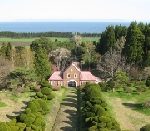
A meadow stretches on both sides of the road approaching this monastery. In 1902, Holstein dairy cows were imported from the Netherlands and the meadow became the birthplace of dairy farming in southern Hokkaido. In 1896, nine monks from France came to Hakodate. They established a monastery in a place overlooking the Tsugaru Strait.
Their motto was “Prayer and work” from La Trapp Abbey, the Trappe Monastery in France. The French monastery also overlooks the Dover Strait – the English Channel.
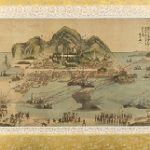
The museum exhibits archeological materials, folk materials, geological, mineralogical, and fossil materials, and animal and plant materials within and beyond Hokkaido. In addition, it possesses historical materials related to Hakodate City.
The all-out assault on Hakodate in the Battle of Hakodate (1868 – 1869) occurred on May 11th 1869. Books and Nishikie, Japanese multi-colored woodblock prints were published. They describe the Battle of Hakodate and aimed to satisfy Tokyo-ko, the people from Tokyo, instead of Edo-ko, the people from Edo, after the Edo period (1603 – 1868) ended.
This museum possesses the Nishikie of the Battle of Hakodate, as well as valuable cultural assets that convey the Jomon culture, which had interacted with Honshu Island, over 10,000 years before the rise of the sea levels. At that time, Tsugaru Strait was like a river. The history of the Strait in the modern times overlaps the history in the ancient times.
– Edo remained in Hakodate, instead of Tokyo, like strait continuing from the river.

This is a sculpture museum dedicated to Nakahara Teijiro ( 1888 -1921), a pioneer of Modern Japanese Sculpture. He was associated with Asahikawa and made a great mark on the history of modern Japanese sculpture. This museum holds Permanent and special exhibitions centering on his 12 sculptures that express the interior of objects with solid and realistic composition. This museum introduces the inner breath of his arts which had let Akutagawa Ryunosuke (1892 – 1927), a Japanese writer, describe it as alive.
– The two-story wooden building of this museum was built in 1902 in the Western style, as an army officer club. It was restored for this museum.
